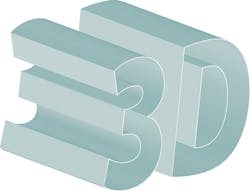Will the 3D printing revolution kill engineering jobs?
Materialise employs about 900 people, of which the company says only 50 are operators who take care of the printing and finishing. Most of the employees are engineers involved in the design process for projects that come through their industrial-based site, www.materialiseonsite.com. That is a lot of engineers, but it’s also a lot of engineers when you compare it to the highly consumer-based 3D-printing manufacturer, Shapeways, New York.
Shapeways has file upload, instant quote, delivery, and a platform for consumers to sell their printed products. The manufacturer gets 60,000 uploads per month, so if every one of those uploads were printed just as a single part, that almost doubles Materialise’s annual print count. You would think two times the quantity of orders would equate to double the staff, but Shapeways has well under 100 employees. So why doesn’t Shapeways need as many engineers?
Part of the answer is the type of industry. Industrial-based products typically need more complex guidance. Materialise mentions their industrial customers often ask for engineering advice regarding material requirements and build strategy. However, the company says on its new consumer-driven Web site called www.imaterialise.com, which is similar to Shapeways, consumers prefer to find their own answers. So it makes sense that if a customer base is mostly consumer, the manufacturer can simply post design information on their Web site and the user will figure it out. Both Materialise and Shapeways supply an exhaustive amount of design information in the form of FAQs, tutorials, blogs, and videos.
In addition to free advice, the companies offer automated engineering logic. Materialise calls its automated process streamics robot. The robot converts CAD to STL, fixes part errors, generates previews, extracts part dimensions, repositions parts, fills parts with internal structures, and even lets users integrate the technology into their own application via the API. Shapeways boasts a related technology where the part is automatically flipped to fit the printer, thereby eliminating a step for an operator. These decision-making technologies make it easy for anyone to prepare a file to print. And, for the consumer customer, the technologies remove most, if not all, interaction with an engineer.
Now, you might be thinking, if it is so easy to create a 3D model, then why do my friends and family ask me to help with their inventions? That’s a good point. For questions about designing a 3D model, Shapeways currently refers consumers to a list of free 3D-modeling software or a small list of “designers for hire.” Not much automation there, but still amazing they only need to list four contract designers with the amount of traffic the Web site receives.
However, for recurring requests, Shapeways supplies custom design apps that almost eliminate the need for engineers. For example, because rings are such a popular product printed by consumer customers, the company provides an app that converts the consumer’s 2D design into a 3D ring. These apps will probably, if not already, help with the creation of more complex designs and help with FEA. Pairing these design apps with publicly available engineering advice and the endless amount of open-source 3D files, and it’s easy to imagine a world that needs only one engineer for every 10 employed today.
About the Author
Lindsey Frick
Associate Editor
Lindsey has been an Associate Editor for Machine Design since 2012. She holds a Bachelor of Science in mechanical engineering from Cleveland State University. Prior to joining Penton, she worked in product design, packaging, development and strategy, and manufacturing. She covers the materials market and other areas of interest for design engineers such as 3D printing and methods to operate efficiently.

